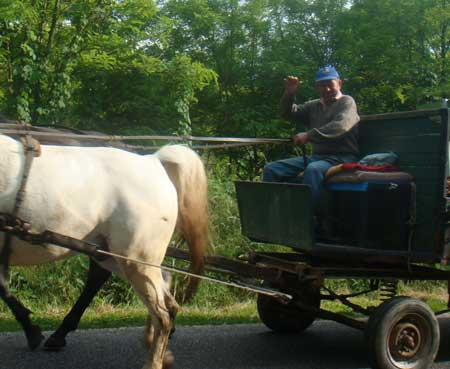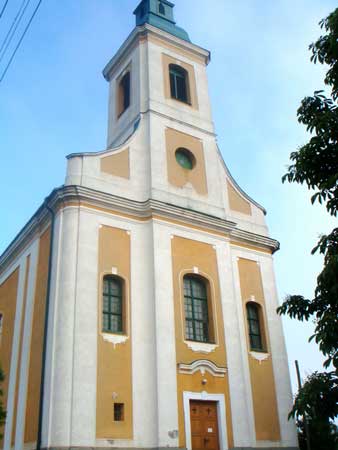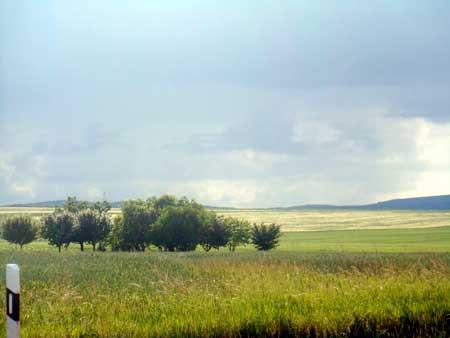Home Again in Ajkarendek

The year was 1890-something, the place an inauspicious village in the Bakony hills of northwestern Hungary. There, a young man by the name of Ferenc was tiring of the agricultural life of his village, Ajkarendek, where his family and a couple dozen others tilled fields of wheat and vegetables. The New World was calling: some men from the nearby towns and even from his own village had already cast their lots with the promises of America, and their stories trickled back to the village where Ferenc and friends would repeat the news from abroad. There were jobs and opportunities in New York, said the letters, where a growing number of Hungarian immigrants were setting roots. These were the adventure-seekers, the ne'er-do-wells convinced wealth would come more easily 'elsewhere,' and ordinary men looking for a change. The trick was to stay with a friend long enough to find a job, and that meant the point of entry would be New York or New Jersey, with the rest of the newly swelling Hungarian expat community.
Perhaps Ferenc finally decided to
follow the others and see if the New World would treat him any better than the Old, where his village was a German-speaking minority in an increasingly Magyar world. After the harvest he bought passage on a steamship sailing from
Rotterdam, a full week's travel by horse carriage and steam train. He bid farewell to his
young wife Anna, his six young children, and his village, and went west to
New York as part of a wave of young Hungarians that emigrated from 1889 to 1913.

He'd live with friends for about five years, sending letters and money back to Hungary several times a year. Later his wife and children would join him. Ferenc - now Frank - was now living in, New Jersey, working as a laborer in a paint factory. Only a few years after that, he would be dead of lead poisoning; his children would go on to prosper, and his wife Anna would live long enough to hold her great-grandson on her lap. And one hundred nineteen years after Ferenc departed the family farm, that same great-grandson would come from New York to Ajkarendek, Hungary, to have a look around.
Well over seventy percent of tourists to Hungary wind up in Budapest, which is without question a fantastic city. The rest wind up at Lake Balaton, which is no less a worthwhile destination, and a terribly handsome body of water. But to travel overland to a village of no touristic value whatsoever and visit the stomping grounds of my long-departed ancestors was a thrill. We poked our noses into the graceful, mustard-colored Baroque church, perused the headstones in the grassy plots of the community cemetery, and appreciated the grassy stream that bisected the village. We even found a few relatives, distant cousins from the family that decided to stay behind (amazing!). Ajkarendek was probably little changed over the century: with the exception of paved streets and electric lines, it was still little more than a couple hundred stucco homes with vegetable gardens behind, blanketed on all sides by the village fields, and the little, tree-lined road that led into town and the market.
There are lots of ways to travel. For us, this was a new one: a journey that took us not only through Central Europe by rail, plane, and bus, but as well through time to a village my ancestors would find recognizable. If the Hungarians of Ferenc's generation were as kind and hospitable as those I met on our journey, it would be an easy place to call home. And in a distant sort of way, that's what we will do.

Trackbacks
The author does not allow comments to this entry

Comments
Display comments as Linear | Threaded